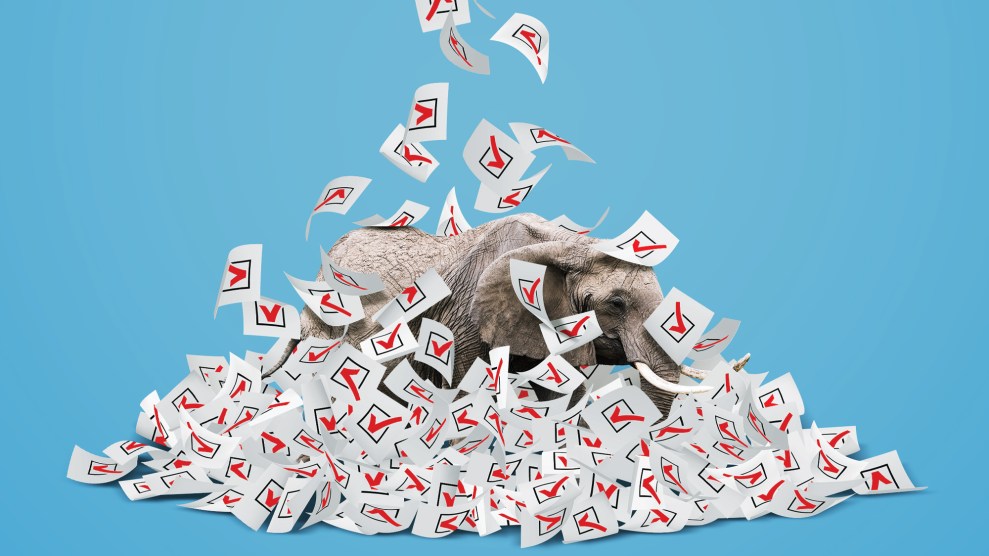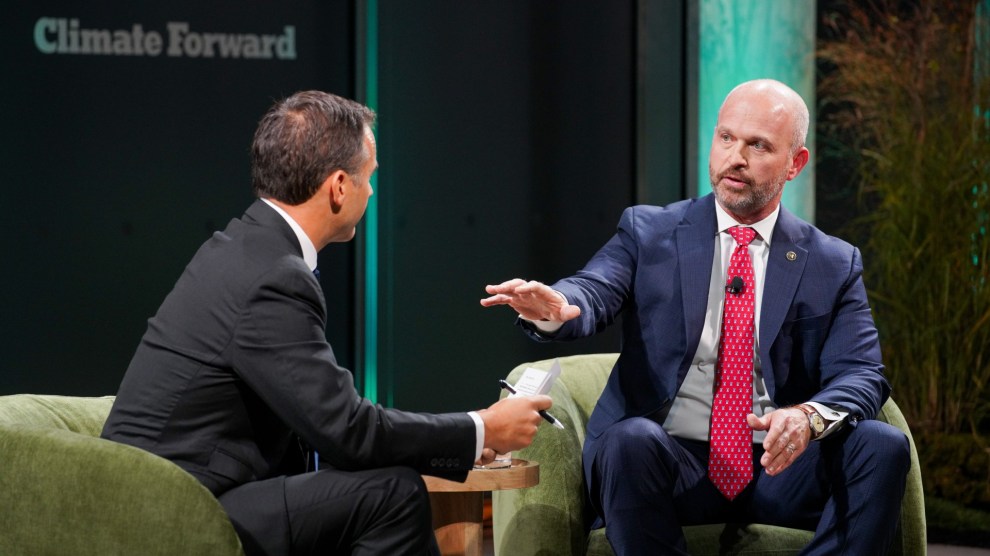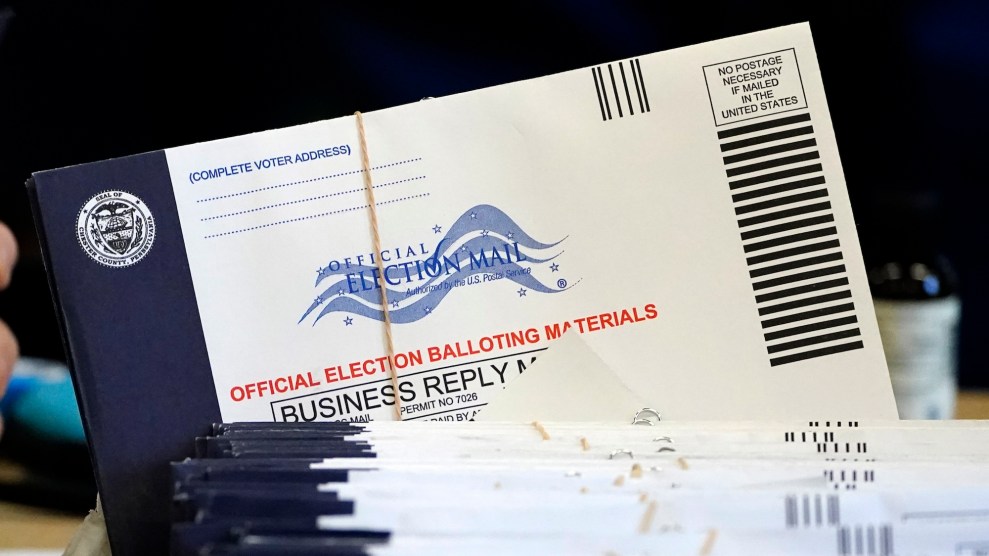SOURCES
|
IRAQ 101 Partly Sunni: Iraq’s Hot Seats: The Iraqi 5,000 Years of Invasions: |
CIVIL WAR
Insurgent and Militia
Attacks GAO
“Rebuilding Iraq—Status of DOD’s Reconstruction Program” . December
15,2006
Major Bombings
The Brookings Institution
“Iraq Index” Febraury 1,2007
Sectarian Violence
in 2006: Department of Defense, “Measuring
Security and Stability in Iraq,” November 2006.
Average Daily Casualties:
Department of Defense“Measuring
Security and Stability in Iraq,” November 2006.
The Lay of the
Land
Dominant Groups map:
globalsecurity.org, Ethnoreligious
Groups
Population Density
map: University of Texas, Perry-Castaneda Map Collection, Population
Density.
Oil Industry map:
Energy Information Administration, Iraq
Oil Map.
U.S. Bases and Strongholds
map: globalsecurity.org, Major
Base Camps.
In the Line of
Fire
American Casualties:
Department of Defense, OIF-Totat-by-month.
Who’s Fighting
U.S. Soldiers: Associated
Press, “U.S.
Army’s 3rd Infantry Deploys for a Third Tour” , January 2007. “Pentagon
Puts 6050 Fort Riley Soldiers on Alert for Iraq”, November 2006; Department
of Defense spokesperson gave troop levels at 132,000 as of end of December
2006.
British Soldiers:
Brookings Institution, “Iraq
Index”, page 21, January 2007.
Other Coalition Soldiers:
U.S. Department of State’s Bureau of Near Eastern Affairs, “Iraq
Weekly Status Report”, January 10, 2007.
Iraqi Military: U.S.
Department of State’s Bureau of Near Eastern Affairs, “Iraq
Weekly Status Report”, January 10, 2007.
Iraqi Police: U.S.
Department of State’s Bureau of Near Eastern Affairs, “Iraq
Weekly Status Report”, January 10, 2007.
Kurdish pesh merga:
Congressional Research Service “Iraq: Post-Saddam
Governance and Security, page 23”, December 6, 2006.
Sunni Insurgents:
Brookings Institution, “Iraq
Index,” page 17, January 2007; Congressional Research Service, “Iraq:Post-Saddam
Governance and Security,” page 28, December 6, 2006.
Shiite Militias:
Brookings Institution, “Iraq
Index,” page17, January 2007; The Iraq Study Group, “Iraq
Study Group Report,” page 11, December 2006.
Foreign Fighters:
Brookings Institution “Iraq
Index,” page 18, January 2007.
Who’s Dying
U.S. Soldiers:
DOD via icasualties
British Soldiers: DOD via icasualties
Other Coalition Soliders: DOD via icasualties
Iraqi Soldiers/Police: DOD via icasualties
Iraqi Civilians: U.N. Assistance Mission for Iraq
October 2006
Defense Contractors: San Diego Union Tribune November 22,2006
Journalists: Reporters Without Borders
THE COST
War
costs $1.9 billion a week: Congressional Research Service, “The
Cost of Iraq, Afghanistan, and Other Global War on Terror Operations Since
9/11,” page 4, September 22, 2006.
Federal spending on
Iraq and reconstruction: Congressional Research Service, “The
Cost of Iraq, Afghanistan, and Other Global War on Terror Operations Since
9/11,” page 4, September 22, 2006.
Good Money After
Bad
U.S. funded Iraqi
National Congress: Congressional Research Service “Iraq:Post-Saddam
Governance and Security,” page 48, December 6, 2006.
Cost of “Future of
Iraq Project”: Congressional Research Service “Iraq:Post-Saddam
Governance and Security,” pages 12-13, December 6, 2006.
Cost of Iraq Study
Group: Congressional Research Service “Iraq:Post-Saddam
Governance and Security,” pages 43, December 6, 2006.
Pentagon requests
$806 million for military base construction: Congressional Research Service
“Military
Construction in Support of Afghanistan and Iraq,” April 11, 2005.
Congress budgeted
$20 million for a “commemoration of success” for troops: National
Defense Authorization Act for Fiscal Year 2006, December 19, 2005.
Fables of the Reconstruction
Head of USAID talks
about Iraq reconstruction: ABC’s “Nightline”,
April 23, 2003.
Reconstruction costs
$34.1 billion: Congressional Research Service, “Iraq: Recent Developments in Reconstruction Assistance”, page 2,
June 15, 2006.
Cost of rebuilding
Germany: Congressional Research Service, “U.S. Occupation Assistance: Iraq, Germany and Japan Compared”, March 23,
2006.
And How Many Rooftop
Helipads?
Embassy budget, Request
and Arabic-speaking staff: CRS Report “U.S. Embassy in Iraq”
Department
of Defense
Iraq Embassy size:
Hearing Before the Committee on International Relations, House of
Representatives, May 12, 2005.
Pipe Dreams
Paul Wolfowitz, “relatively
soon” House Committee on Appropriations Hearing on a Supplemental War
Regulation
March 27,2003
Missed
export goals: Government Accountability Office, “Securing,
Stabilizing, and Rebuilding Iraq: Key Issues for Congressional Oversight,”
January 2007; The Brookings Institution, “Iraq
Index: Tracking Reconstruction and Security in Post-Saddam Iraq,”
January 2007.
$2 and $5.4 billion
a year for reconstruction: Congressional Research Service “Iraq:
Post-Saddam Governance and Security” November 7, 2006; Congressional
Research Service, “Iraq:
Recent Developments in Reconstruction Assistance,” June 15, 2006.
Baghdad gets an average
of 4 hours 30 minutes Iraq Weekly Status Report, State Department
January 24,2007
Estimated
cost of boosting Iraq’s power capacity by 2010: “Rebuilding
Iraq: More Comprehensive National Strategy Needed to Help Achieve U.S.
Goals”, GAO, July 2006.
Estimated Cost of
Installing Solar Panels Naval Postgraduate School “Operation Solar
Eagle”
June 2005
Attacks
on Iraqi Fuel Industry: Institute for
the Analysis of Global Security.
Coalition of the
Dwindling
Pundits:
David Brooks: The
New York Times, “For
Iraqis to Win, the U.S. Must Lose”, by David Brooks, May 11, 2004.
Tucker Carlson: The
New York Observer, “Newly
Dovish, Tucker Carlson Goes Public…Kimmel Writer Ribs Times”, by
Joe Hagan, May 17, 2004.
Francis Fukuyama:
The National Interest, “The
Neoconservative Moment”, by Francis Fukuyama, June 1, 2004.
Bill O’Reilly: “The
O’Reilly Factor,” “Ann
Coulter on Iraq and Immigration”, transcript from show on August 5,
2005.
Andrew Sullivan: andrewsullivan.com,
“The
Next Abu Ghraib Scandal”, September 30, 2005.
William F. Buckley
Jr.: The National Review, “It
Didn’t Work”, February 24, 2006.
Joe Scarborough: MSNBC,
“Losing Patience
with Bush”, by Joe Scarborough, March 15, 2006.
Thomas Friedman: The
New York Times, “Big
Talk, Little Will”, by Thomas Friedman, August 16, 2006.
George Will: The
Washington Post, “The
Triumph of Unrealism”, by George Will, August 15, 2006.
Jonah Goldberg: The
National Review, “Iraq
Was a Worthy Mistake”, by Jonah Goldberg, October 20, 2006.
Kenneth Adelman, Eliot
Cohen, David Frum, and Richard Perle: Vanity Fair, “Neo
Culpa”, by David Rose, November 3, 2006 .
The New Republic:
The New Republic, “Obligations”,
by the Editors, November 16, 2006.
Fred Barnes: The
Weekly Standard, “Moxie
in the Executive”, by Fred Barnes, December 11, 2006.
William Bennett:
“The
Forces of Decomposition and the War on Iraq”, Bill Bennett’s Morning
in America show, August 31, 2005
Ann Coulter: CNBC,
“Kudlow and Company,” transcript from show of December 22, 2006.
Christopher Hitchens:
slate.com, “Rushing
for the Exit”, by Christopher Hitchens, October 30, 2006.
Laura Ingraham: U.S.
Department of Defense, “Radio
Interview with Secretary Rumsfeld on the Laura Ingraham Show”, December
12, 2006.
Charles Krauthammer:
The Washington Post, “This
is Realism?”, by Charles Krauthammer, December 1, 2006.
Bill Kristol: The
Weekly Standard,
“It’s Up to Bush”, by Robert Kagan and William Kristol, December 18,
2006.
Rush Limbaugh: The
Rush Limbaugh Show,
transcript from November 27 show.
Michelle Malkin Jewish
World Review, “What
I Saw in Iraq”, by Michelle Malkin, January 17, 2007.
Cal Thomas: Jewish
World Review, “This
Way Out?”, by Cal Thomas, December 7, 2006.
Allies
Dates of allies dropping
out: Congressional Research Service, “Iraq: Post-Saddam Governance and
Security,” November 7, 2006 and Global Security, “Iraq
Coalition Troops,” November 2006.
Allies staying the
course: Brookings Institution, Iraq
Index, retrieved January 16, 2007.
Bill Me Later
Lawrence Lindsey
Mother Jones “Bush’s Fuzzy War Math
September 2003
Ari
Fleischer White House Press Briefing
October 1, 2002
Paul
Wolfowitz U.S. Department of Defense Transcript
February 27,2003
George
W. Bush White House Press Conference
March 6, 2003
Donald
Rumsfeld U.S. Department of Defense Transcript March 28, 2003
With Friends Like
These
41 cents of every dollar to military or police: CRS Report “Iraq:
Recent Developments”
June 15,2006
3 cents to democracy building: CRS Report “Iraq: Recent Developments”
June 15,2006
A
newly recruited Iraqi soldier’s wage is $60: Congressional Research Service
“Iraq:
Post-Saddam Governance and Security,” page 23, November 7, 2006.
Half of soldiers go
AWOL; “more deployable mindset:” Department of Defense, “Measuring
Stability and Security in Iraq,” November 2006.
Iraq’s security forces
neither “technically proficient” nor “politically dependable:” Michael
O’Hanlon, Brookings Institute; New York Times, “The
State of Iraq,” December 19, 2006.
70 percent of the
Iraqi police infiltrated: Alexander Shaw, 372nd Military Police Battalion;
Washington Post: “In
Baghdad, a Force Under the Militias’ Sway,” October 31, 2006.
90,000 rifles missing:
Government Accountability Office”Securing, Stabilizing, and Rebuilding Iraq: Key Issues for Congressional Oversight,” January 2007.
Down the Drain
Corruption costs $4
billion: The Guardian
“Corruption: The ‘Second Insurgency’ Costing $4bn a Year”, by Julian
Borger and David Pallister, December 2, 2006.
$8.8 billion: Office
of the Special Inspector General for Iraq Reconstruction, “Oversight
of Funds Provided to Iraqi Ministries through the National Budget Process,”
January 2005.
Ghost employees: Government
Accountability Office, “Securing,
Stabilizing, and Rebuilding Iraq,” January 2007.
30% of Iraq’s refined
oil ends up on black market or smuggled out of the country: “Securing,
Stabilizing, And Rebuilding Iraq,” January 2007; GAO.
$9 billion in oil
revenues lost by CPA: Special
Inspector General for Iraq Reconstruction Report to Congress, January
30, 2005.
Saddam stole $10.1
million from the U.N. Oil-for-Food program: Government Accountability
Office“Recovering
Iraq’s Assets,” March 18, 2004.
Babylonian Captivity
France, Italy, Germany paid millions in ransoms: GlobalSecurity.org.
Germany paid $8 million
in ransoms:
“The Economic Costs of the War in Iraq”, by Scott Wallsten and Katrina
Kosec, pages 9-10, September 2005.
Army private with
spouse, 3 children: National Academy of Social Insurance,
“Survivor Benefits for Families of Deceased Servicemembers and Overseas
Contract Workers, by Virginia Reno, Anita Cardwell, and Joni Lavery,
October 2006.
American defense contractor:
National Academy of Social Insurance,
“Survivor Benefits for Families of Deceased Servicemembers and Overseas
Contract Workers, by Virginia Reno, Anita Cardwell, and Joni Lavery,
October 2006.
Nepalese laborer:
Los Angeles Times,
“Poor Migrants Work in Iraqi Netherworld”, by T. Christian Miller,
October 9, 2005.
Iraqi civilian: Associated
Press, “Britain Pays Compensation to Iraqis,” July 19, 2004.
Iraqi soldier: San
Francisco Chronicle,
“An Army Where Wounded Soldiers are on Their Own”, by Ben Gilbert,
June 10, 2006.
Iraqi family: The
New York Times,
“For Iraqis in Harm’s Way, $5,000 and ‘I’m Sorry'”, by Jeffrey Gettleman,
March 17, 2004.
AFTERMATH
Iraq’s Newest Export:
Refugees
Iraqis displaced
United Nations High Commissioner for Refugees
November 30,2006
Saudi Arabian fence Daily Telegraph“Saudi’s Build Fence to Shut Out Iraq”
Jordan/Sweden United Nations High Commissioner for Refugees, September 30,2006
November 30, =2006
Only 202 admitted
to U.S. Larry Yungk, UNCHR
Iraq: Before and After
30%
of Iraqi children in school: U.N. Office for the Coordinator of Humanitarian
Affairs,
“IRAQ: School Attendance Rates Drop Drastically, October 18, 2006.
PTSD in Iraqis, children:
The Lancet,
“Mental Health of Iraqi Children”, by Ali Razokhi, September 2, 2006.
40% of Iraqi professionals:
Brookings Institution, “Iraq
Index”, page 24, January 2007.
1/3 doctors gone,
2,000 murdered: Brookings Institution, “Iraq
Index”, page 35, January 2007.
Number of Iraqis in
jail: Brookings Institution, “Iraq
Index”, page 16, January 2007.
Bodyguard increase:
Agent France Presse, “Violence in Iraq Increasingly Targeting Women,”
November 22, 2006.
Worst time ever in
Iraqi women’s lives: The Observer,
“Hidden Victims of a Brutal Conflict, by Peter Beaumont, October 8,
2006.
Breaking the Army
American soldiers
doubt success: Army Times, “Down on the War,” January 8, 2007.
It costs $275,000
to deploy one soldier for a year: Congressional Research Service“The
Cost of Iraq, Afghanistan, and Other Global War on Terror Operations Since
9/11,” September 22, 2006.
It cost $5,840 to
feed a soldier for a year: Mary Ann Hodges, United States Army Public
Affairs Officer.
Army doctrine: “Counterinsurgency
Handbook,” Department of the Army Headquarters, December 2006.
Domestic National Guard
units left with 1/3 of combat equipment: Government Accountability Office“Force
Structure: Capabilities and Cost of Army Modular Force Remain Uncertain,”
April 4, 2006.
20,000 troops are
in Baghdad currently: United States Army Public Affairs Officer.
Quote from David Grange
about sustaining troops levels: Army Times, “By the numbers: Who’s
fighting; Deployment data underscore the strain of combat operations,”
December 11, 2006; Michelle Tan.
27 years of use: Government
Accountability Office,Preliminary
Observations on Equipment Reset Challenges and Issues for the Army and
Marine Corps” March 2006.
It cost $17 billion
to replace equipment: Mary Ann Hodges, United States Army Public Affairs
Officer.
Army divorce rate
increase between 2003 and 2005: Ann Edgecomb, United States Army Public
Affairs Officer.
And the National Guard
and Reserves
Domestic National
Guard units left with 1/3 of combat equipment: Government Accountability
Office“Force
Structure: Capabilities and Cost of Army Modular Force Remain Uncertain,”
April 4, 2006.
Equipment transfer
worth $1.76B: Government Accountability Office, “Preliminary
Observations on Equipment Reset Challenges and Issues for the Army and
Marine Corps,” March 2006.
Army National Guard
soldiers deployed to Vietnam: The National Guard Educational Fund“Major
National Guard Call-ups in the 20th Century.”
Army Guardsmen Deaths,
Iraq: Lt. Col Mike Milord, Army National Guard Office of Public Affairs
& Strategic Communications; Department of Defense, “Deployment File for
Operation Enduring Freedom & Iraqi Freedom,” November 2006.
126 Army National
Guard Killed in Vietnam: Lt. Colonel Les’ Melnyk, Chief, Command Information
Division, National Guard Bureau Office of Public Affairs.
Deploying reservists
cost U.S. economy $4 billion in lost productivity: AEI-Brookings Joint
Center“The
Economic Costs of the War in Iraq,” September 2005.
Shell-Shocked
All: National Center
for PTSD
The Unique Circumstances and Mental Health Impact of the Wars in Afghanistan
and Iraq
The Home Front
Rural death rate:
The Carsey Institute,”U.S.
Rural Soldiers Account for a Disproportionately High Share of Casualties.”
Fall 2006.
Military domestic
violence: Anita Sanchez, Communications Director, The Miles Foundation.
1 in 5 military spouses
get government assistance: “Military
Families Study,”Kaiser Family Foundation/Harvard University, March
2004
Wife of a New York
National Guardsman: “Battles on the Home Front,” Newsday, April 19, 2005
and “Military Families Cope and Hope This Thanksgiving,” USA Today, November
24, 2004.
Ultimate Sacrifice
All: Brookings Institution,
“Iraq
Index”, page 14, January 2007.
Putting a GI Back
Together Again
23,000 soldiers have
been wounded in Iraq: Department of Defense Operation
Iraqi Freedom (O.I.F.) U.S. Casualty Status.
Number of Iraqi veterans
who suffered from brain injury: AEI-Brookings Joint Center “The
Economic Costs of the War in Iraq,” September 2005.
Cost to evacuate a
severely wounded soldier: 60 Minutes, “Saving
Lives in Iraq,” November 5, 2006; Scott Pelley.
Amputation rate in
Iraq is double that of other wars: “Department
of Defense Appropriations Bill, 2005” June 24, 2004.
Soldiers who have
lost a limb in Iraq and what their lifetime treatment costs will be: AEI-Brookings
Joint Center “The
Economic Costs of the War in Iraq,” September 2005.
1 in 5 Iraq veterans
suffer from PTSD: Terry Jemison, Veterans Affairs Public Affairs Officer.
Cost of a prosthetic
limb: AEI-Brookings Joint Center “The
Economic Costs of the War in Iraq,” September 2005.
Army suicide rate:
Henry Minitrez, United States Army Public Affairs Officer.
Gulf War vets on disability:
Linda Bilmes, Kennedy School of Government Faculty Research Working Paper
Series, “Soldiers
Returning from Iraq and Afghanistan: Long-Term Costs of Providing Veterans
Medical Care and Disability Benefits,” January 2007; Milken Institute
Review,“Encore:
Iraq Hemorrhage,” Fourth Quarter 2006.
<< The Data: The Iraq
War and Jihadist Terrorism <<
![]()












